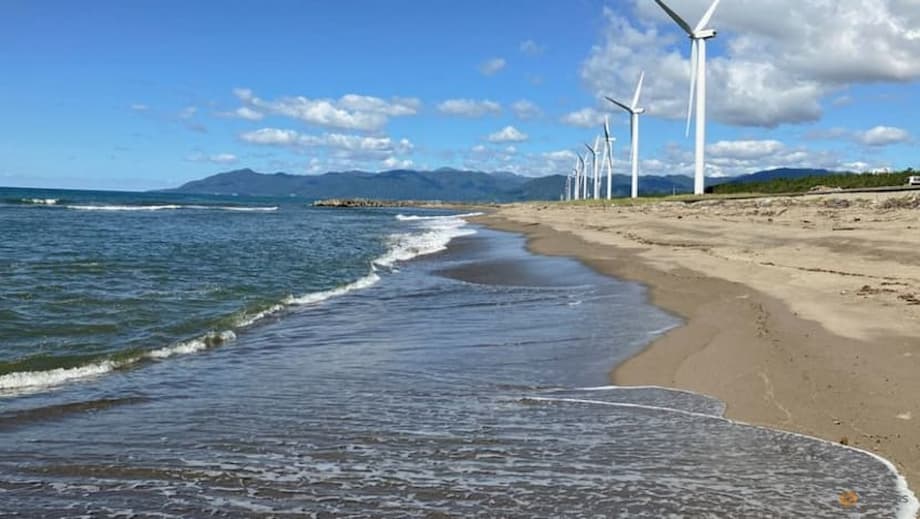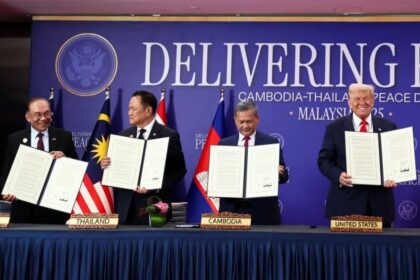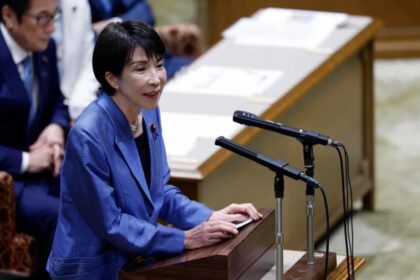Japan’s Offshore Wind Ambitions Hit by Mitsubishi’s Withdrawal
Japan’s ambitious plans to become a global leader in offshore wind energy have suffered a significant setback. Mitsubishi Corporation, one of the country’s most prominent conglomerates, has announced its withdrawal from three major offshore wind projects. These projects, located off the coasts of Akita and Chiba prefectures, were expected to deliver a combined capacity of 1.76 gigawatts (GW) and play a crucial role in Japan’s transition to renewable energy. The government’s response—re-auctioning the abandoned sites and revising regulations—signals both the challenges and determination shaping Japan’s clean energy future.
- Japan’s Offshore Wind Ambitions Hit by Mitsubishi’s Withdrawal
- Why Did Mitsubishi Abandon the Projects?
- What Were the Projects and Why Were They Important?
- Financial and Policy Consequences for Mitsubishi and Partners
- Japan’s Government Response: Re-Auction and Regulatory Reform
- Global Context: Offshore Wind Faces Headwinds Worldwide
- What Happens Next? The Path Forward for Japan’s Offshore Wind Sector
- Broader Implications: Energy Security, Decarbonization, and Market Trust
- In Summary
Why Did Mitsubishi Abandon the Projects?
The decision by Mitsubishi and its partners to exit the projects was driven by a dramatic increase in costs. When the consortium won the rights to develop the wind farms in 2021, the business environment was markedly different. Since then, construction costs have more than doubled, supply chains have tightened, and global economic shocks—including the Covid-19 pandemic and the war in Ukraine—have sent inflation and interest rates soaring. These factors combined to make the projects financially unviable.
Mitsubishi’s Chief Executive, Katsuya Nakanishi, explained that even after exploring all possible countermeasures, including restructuring supply chains and reassessing project schedules, the total expenditures—including maintenance and operational costs—would exceed the expected revenue from electricity sales. The company had already recorded a charge of 52.2 billion yen (about $354 million) related to the projects, while its partner Chubu Electric Power anticipated a loss of around 17 billion yen ($115 million).
Mitsubishi’s CEO stated, “Cost increases had far exceeded projections, including construction prices more than doubling since the 2021 bidding phase. Even with countermeasures, total expenditures would surpass electricity sales revenue, making project continuation difficult.”
This withdrawal is not an isolated incident. The global offshore wind industry has faced similar challenges, with companies like Denmark’s Orsted and Shell also scaling back or withdrawing from projects in Japan and elsewhere due to rising costs and market uncertainties.
What Were the Projects and Why Were They Important?
The three projects in question were:
- The 819 MW Yurihonjo wind farm offshore Akita Prefecture
- The 478.8 MW Noshiro Mitane Oga project, also off Akita Prefecture
- The 390.6 MW Choshi wind farm offshore Chiba Prefecture
These sites were awarded to Mitsubishi-led consortia in Japan’s first fixed-bottom offshore wind auction in December 2021. The projects were scheduled to begin operations between 2028 and 2030, with the aim of helping Japan reach its target of 10 GW of offshore wind capacity by 2030 and 45 GW by 2040. For context, Japan currently has only about 288-300 MW of operational offshore wind capacity, making these projects vital for scaling up renewable energy and reducing reliance on imported fossil fuels.
Japan’s energy security is a pressing concern. The country is the world’s second-largest importer of liquefied natural gas (LNG) after China, and its dependence on fossil fuels increased after the 2011 Fukushima nuclear disaster led to the shutdown of most nuclear reactors. Offshore wind is seen as a key pillar in diversifying Japan’s energy mix and achieving its decarbonization goals.
Financial and Policy Consequences for Mitsubishi and Partners
Mitsubishi’s withdrawal carries significant financial and reputational consequences. The government will retain 20 billion yen (about $136 million) in deposits from the Mitsubishi-led groups, and the consortium is barred from participating in the next auction round. This penalty reflects the seriousness with which the Japanese government is treating the need for reliability and follow-through in its renewable energy transition.
Industry observers note that Mitsubishi’s aggressive bidding strategy in the inaugural auction—offering low strike prices for electricity—may have contributed to the project’s downfall. The strike prices secured in 2021 ranged from JPY 11,990 to JPY 16,490 per megawatt-hour (MWh), which, in hindsight, may not have accounted for the subsequent surge in costs and market volatility.
According to Recharge, “Mitsubishi and its consortia partners have forfeited $136 million in deposits and are barred from the next auction round after their strategy of aggressively outbidding competitors in Japan’s inaugural offshore wind tender led to their downfall.”
Japan’s Government Response: Re-Auction and Regulatory Reform
The Japanese government has moved quickly to address the fallout from Mitsubishi’s exit. Officials have announced plans to re-auction the three abandoned sites, pending approval from local communities. The government is also reviewing the reasons behind Mitsubishi’s withdrawal to inform future policy and auction design.
Yuichi Furukawa, wind energy policy director at Japan’s Ministry of Economy, Trade and Industry (METI), is leading the examination of what caused Mitsubishi’s withdrawal. The findings will be used to improve the structure of future auctions and to ensure that similar setbacks are avoided.
Furukawa told Reuters, “Offshore wind projects are being suspended globally due to rising costs, but Mitsubishi’s withdrawal would not hinder the country’s offshore wind market.”
One of the key regulatory changes under consideration is extending the operational period for offshore wind projects. Currently, leases are typically granted for 30 years. An expert panel has proposed allowing companies to apply for an extra 10 years, bringing the total to 40 years. This extension would improve cash flow, increase electricity sales, and make projects more attractive to investors by allowing them to recoup their investments over a longer period.
Japan is not alone in considering such measures. European countries like Denmark have also started extending wind farm leases to improve project economics and maintain renewable energy output. These changes reflect a broader recognition that the offshore wind industry is facing a “new normal” of higher costs and greater uncertainty.
Global Context: Offshore Wind Faces Headwinds Worldwide
Mitsubishi’s withdrawal is part of a larger trend affecting the offshore wind industry globally. Rising costs, supply chain disruptions, inflation, and fluctuating exchange rates have made it increasingly difficult for developers to deliver projects on time and within budget. In the United States, political opposition and project delays have also hampered progress. Major players like BP, RWE, Orsted, and Shell have all scaled back or paused offshore wind projects in response to these challenges.
For Japan, these global headwinds are compounded by domestic factors. The country has limited near-shore sites suitable for fixed-bottom turbines, which are less expensive and technologically mature than floating wind platforms. To meet its 2040 goal of 45 GW of offshore wind capacity, Japan will need to accelerate the development of floating wind technology, which is still in its early stages and comes with higher costs and technical risks.
Despite these challenges, the Japanese government remains committed to its renewable energy targets. Officials emphasize that the offshore wind market remains robust and vital for the country’s energy transition. The government is determined to learn from Mitsubishi’s withdrawal and to create a more resilient and attractive environment for future offshore wind investments.
What Happens Next? The Path Forward for Japan’s Offshore Wind Sector
The immediate next step is for the government to secure approval from local communities in Akita and Chiba prefectures before proceeding with the re-auction of the three sites. Community consent is a critical factor in Japan, where local opposition can delay or derail large infrastructure projects.
Once approval is obtained, the government will invite new bids for the sites. However, the re-auction process may prove challenging. Rising costs and market uncertainties have made developers more cautious, and some major international players have already indicated they are not interested in taking on the abandoned projects. For example, RWE’s CEO Markus Krebber stated that the German company had no interest in the Mitsubishi projects.
To attract bidders, the government is considering further regulatory reforms, such as:
- Extending lease terms to improve project economics
- Streamlining permitting and approval processes
- Providing more transparent and realistic cost assumptions in future auctions
- Offering incentives or support for the development of floating wind technology
These measures aim to restore confidence in Japan’s offshore wind market and ensure that future projects are both financially viable and aligned with the country’s energy security and decarbonization goals.
Broader Implications: Energy Security, Decarbonization, and Market Trust
Mitsubishi’s exit from the offshore wind projects is a setback, but it also offers valuable lessons for Japan and the global renewable energy industry. The episode highlights the importance of realistic cost assumptions, flexible regulatory frameworks, and the need for ongoing dialogue between government, industry, and local communities.
For Japan, the stakes are high. The country must balance its urgent need to reduce greenhouse gas emissions with the realities of a challenging business environment. Offshore wind remains a cornerstone of Japan’s strategy to reduce reliance on imported fossil fuels and to achieve its 2050 net-zero emissions target.
Industry Minister Yoji Muto called Mitsubishi’s withdrawal “deeply regrettable” and warned that it could undermine trust in the sector. However, he and other officials remain optimistic that Japan’s offshore wind market can recover and emerge stronger, provided that the right lessons are learned and appropriate reforms are implemented.
Japan’s Minister of Economy, Trade, and Industry stated, “The decision is regrettable and could undermine industry trust. We will review the reasons for withdrawal and incorporate the findings into future auctions.”
Ultimately, the success of Japan’s offshore wind ambitions will depend on the country’s ability to adapt to changing market conditions, foster innovation in floating wind technology, and maintain the confidence of investors, developers, and local communities alike.
In Summary
- Mitsubishi Corporation has withdrawn from three major offshore wind projects in Japan due to soaring costs and an unfavorable business environment.
- The projects, totaling 1.76 GW, were crucial for Japan’s goal of reaching 10 GW of offshore wind capacity by 2030 and 45 GW by 2040.
- The Japanese government will re-auction the abandoned sites, pending local community approval, and has imposed financial penalties on Mitsubishi and its partners.
- Regulatory reforms, including longer lease terms and streamlined processes, are being considered to make future projects more attractive to investors.
- The global offshore wind industry is facing similar challenges, with rising costs and market uncertainties affecting projects worldwide.
- Japan remains committed to its renewable energy targets and is determined to learn from this setback to build a more resilient offshore wind sector.












